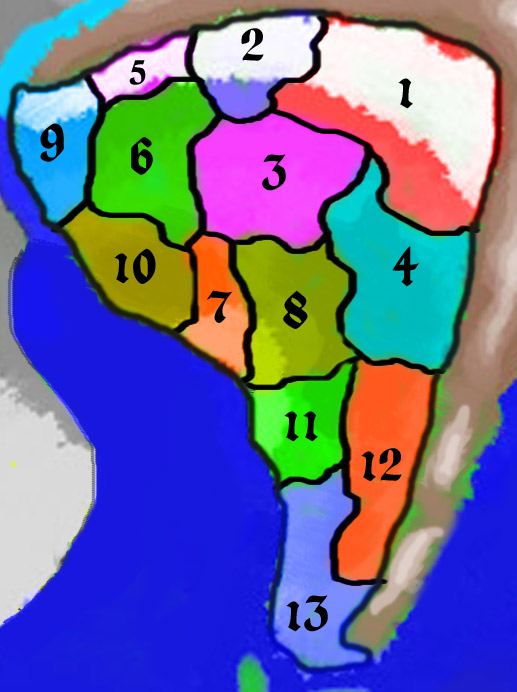Kaltia
From Reydala
Contents |
Environment and Geography
Location
Kaltia resides upon it's own self-named continent, the largest landmass in Reydala's eastern hemisphere. Being surrounded from most sides by mountains and ocean, it is a supremely well defended position. The far western border made by the Muline river is the only Border that Kaltia shares with another country. Kaltia also has claimed the several islands off the Kaltian continents southern peninsula as their own, though they fall under no official district and few inhabit them (outside of Gnomes, that is). In terms of land, Kaltia is second only to Riscana in size.
Environment
As the Kaltian continent is quite large, there is a wide variety of climates contained within. In the northern regions, the cold is only slightly better than the frozen wastes. In the south, the temperatures can reach nigh tropical levels. Kaltia on the whole is covered with a large percentage of forests, mostly deciduous with tundras in the north, and a few jungles existing on the southern peninsula.
Important Terrain Features
Unique Flora & Fauna
History
Pre-Country Status
The Kaltian continent was once populated with many varying countries, each with their own cultures and customs. Many were founded by formally nomadic tribes who chose to settle by the influence of Regial and Hald. These different countries were often at odds with each other due to their very different benefactors, and many bloody and violent wars reigned between them. The continent was the staging ground for Hald's second crusade, and Kaltia remained at nigh-constant war for nearly seventy years after that catastrophe. It was not until Dizal's faith became cemented in Kaltia over 1280-1299 that open warfare declined and treaties between countries appeared. The first merger of small countries happend in 1300, and linked together the countries Reistelm, Estragraille, and Notrasgard into one nation known simply as Kaltia. As the years past, more and more of the countries joined the union. The Last, Joven, joined in 1486, under considerable political pressure.
Kaltian Government
From the first union, the practice of the Councilmaster competition was brought into play. In the early years this was merely controlled warfare in order to determine which of the trinity would hold sway in the nation for a period of seven years. As time progressed, the practice became more and more refined, conflict between armies became conflict between individuals, and more categories besides martial skill were added. Skills such as crafting, magic, hunting, performance and diplomacy began to take equal roles in determining which district would command rule. The councilmaster competition is the foundation of modern Kaltian government.
The district that wins the overall competition presents forward a selection of a new emperor, often this was the competitor in the competition who secured them the victory, though there have been many exceptions over the the thousands of years the practice has been in play. The Emperor is responsible for many things in Kaltia, including settling disputes between districts, dealing with foreign affairs, choosing new laws to bring forward to the council, bringing old laws up for revision or deletion, and governing the next councilmaster competition. Anyone is free to make suggestions in this regard to the Emperor, but the keeper of the throne has the final say and the sole power to call the council together. The council itself consists of representatives from the 12 other districts, chosen within their own districts. The methods of selecting emperors and representatives vary from district to district.
The council votes upon each proposition brought up by the emperor, each proposition is passed if the majority of the districts agree, the Emperor himself holding sway if there is a split council. In this fashion, the emperor does not have complete power over Kaltia (though, depending on the district, he may hold considerable sway there). The districts themselves are largely self-governing, many having their own armies, though they all swear fealty to the emperor and grant to his purposes a portion of their taxes. In times of international war, the armies unite under a single banner. Every district has a palace specifically set up to house the Emperor and the council for their seven year reigns.

